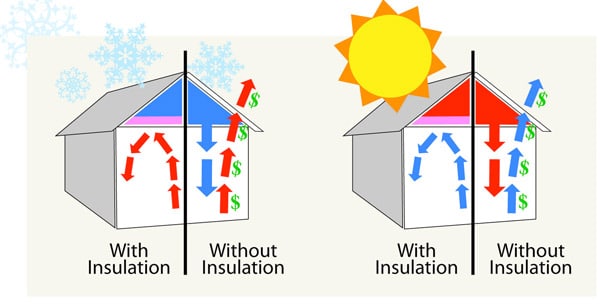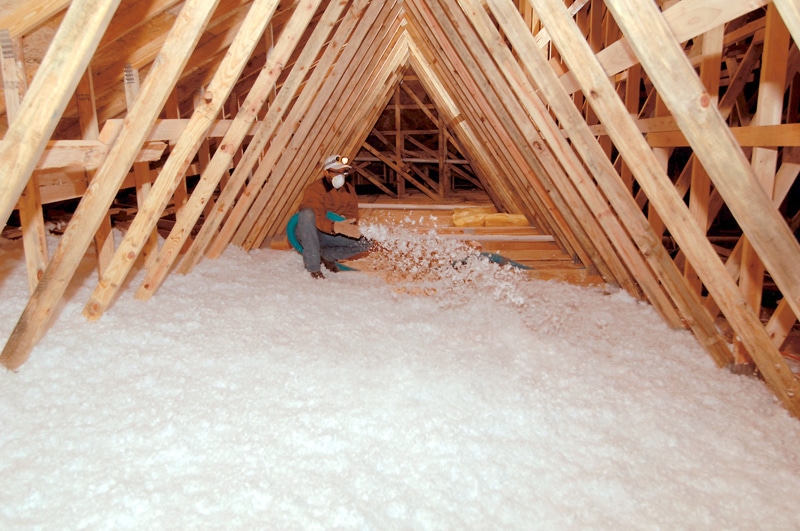Whether you’re an energy efficiency nerd or trying to reduce those massive monthly Washington DC utility bills, ensuring precise attic insulation and ventilation is vital.

In essence, all ventilation is about circulating air to keep it fresh and to reduce moisture levels. Some estimates claim that up to 90% of US homes have unreasonably high levels of moisture. Understanding whether your home could benefit from attic ventilation improvement might be a real a roof-saver.
Insulation on the other hand is the key to your comfort. It knows how to keep hot things hot, and cold things cold. However, it only works if you have good ventilation at the temperature you would like.

Keeping Moisture and Humidity in Check
High attic humidity usually shows up as dampness or frost on the underside of the roof sheathing. Another sign could be that fearsome mold. In almost all cases, these symptoms are due to two construction defects: a ceiling with air leaks, and a damp basement or crawl space.
Insufficient insulation and ventilation can lead to moisture problems during the winter and decreased energy efficiency during the summer, but too much ventilation can be just as bad. Roof vents create an additional roof penetration, essentially another place of vulnerability where leaks can occur- so you don’t want to needlessly increase the number of roof penetrations!
The way to solve this problem is to seal the air leaks, ensure correct insulation levels and correct the moisture problems in the basement. The best protection against condensation and mildew in the attic is a dry basement or crawlspace. You have to think of your home holistically, like a finely tuned ecosystem, making changes in one area may have an impact on another.

Researching and DIY
While hardly anybody agrees on the best attic ventilation system, everybody agrees some roof vents do hardly any good at all. A couple examples might be; gable vents, which may circulate air through only a small percentage of your attic; static roof-line vents, are generally effective for ventilation but not necessarily recommended due to issues with leaks; and soffit vents may leave air trapped at the top of your attic.
Numerous studies have been completed regarding the effectiveness and optimization of general attic ventilation and particular types of roof vents. The benefit of roof ventilation is undisputed in both the laboratory setting and real life. Furthermore, regional differences magnify certain traits of roof ventilation over time. What works best in Phoenix, AZ is probably not the same as what works best in Washington DC.
Attic ventilation and insulation are as much an art as it is a science, and installing your own insulation and roof vents based on something you read online is like trying to diagnose a skin rash using WebMD. If you don’t know how your roof vents work, understand where insulation should be, or if you’re unsure about your attic ventilation in general, you should talk to an expert about your current system and any inherent weaknesses that may be at work. It could save you money and improve your comfort.







